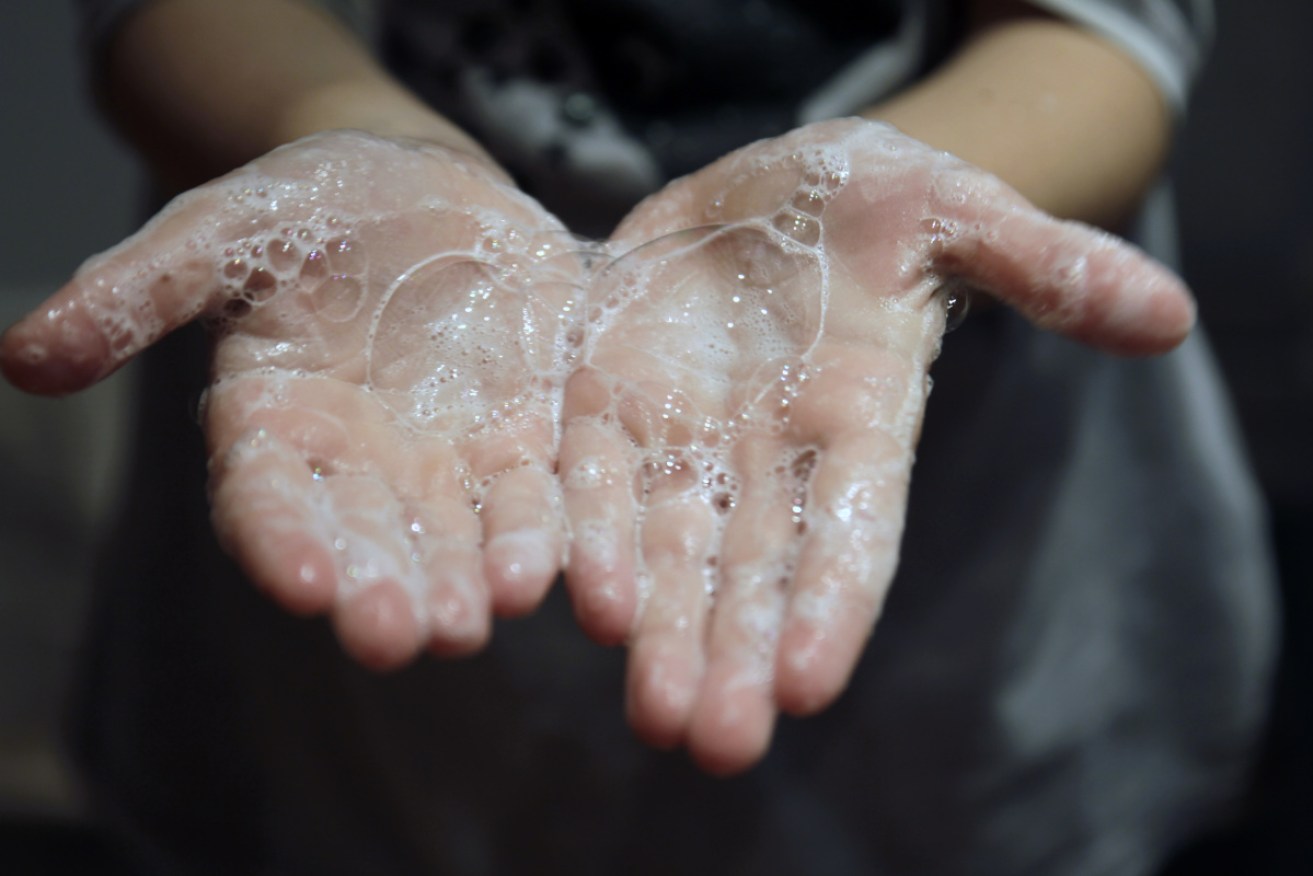Washed your hands? Researchers find coronavirus can live on human skin for nine hours


The virus can be festering away on your hands for nine hours. That's a lot of opportunity to touch your face and get sick. Photo: Getty
The coronavirus can remain viable and dangerous on human skin for about nine hours – more than four times longer than a strain of the influenza A virus (IAV).
This new advice, based on a somewhat ghoulish experiment and research paper, is concerning for two reasons.
Firstly, it highlights the vital importance of washing your hands frequently – and so serves as a reminder at a time when many are suffering ‘COVID fatigue’ and are becoming lax in their self-protective habits.
And please keep in mind that, as we reported in July, Australian children are not washing their hands with soap at school as regularly as British or Indonesian students. A global report found that nearly 70 per cent of Australian children weren’t washing their hands after going to the toilet.
So there’s that.
Secondly, this somewhat vital information – how long the coronavirus remains active on a pair of unwashed hands people – is only coming to light now.
Back in March, The New Daily reported the coronavirus can remain active or stable for up to 72 hours (three days) on hard surfaces such as plastic and stainless steel. In other words, on sinks and bench tops.
That’s about eight months ago.
So what took so long to find out ?
As the researchers from the Kyoto Prefectural University of Medicine in Japan wrote in their paper, published online and with open access at the the journal Clinical Infectious Diseases:
“Contact transmission through human skin is considered a significant risk factor in the spread of SARS-CoV-2; hence, it is critical to have information about the stability (survival time) of SARS-CoV-2
on the human skin to develop approaches to prevent contact transmission.
“However, it is dangerous to apply highly pathogenic and infectious agents, including SARS-CoV-2, directly to human skin.”
In other words, it’s not good medical ethics to smear a deadly virus on the bodies of study participants.
So what about samples of skin gleaned during surgical procedures?
No good. The amount of tissue obtained “is small, which is a deterrent in the construction of models to conduct experiments with high reproducibility.”
Dead people to the rescue
For possible skin samples, the researchers turned their interest to “forensic autopsy specimens”.
The researchers explain that “human skin (particularly the epidermis) is characterised by slower deterioration after death compared to other organs, and the collected skin can be used for grafting even 24 hours after death.”
This means that skin from people – who have been dead for about a day – retains most of its function.
When applied to these skin samples, the authors found SARS-CoV-2 survived for 9.04 hours, compared with 1.82 hours for the influenza A virus.
When mixed with mucus, to mimic the release of viral particles in a cough or sneeze, SARS-CoV-2 remained viable for even longer: about 11 hours.
The good news: both viruses were inactivated on skin about 15 seconds after using hand sanitizer that was 80 per cent ethanol.
“These results indicate that SARS-CoV-2 has markedly higher stability on human skin than that of (influenza A virus),” the authors wrote.
The researchers concluded that the nine hour survival of SARS-CoV-2 on human skin “may increase the risk of contact transmission in comparison with IAV, thus accelerating the pandemic.”
Well, sure. And so once more we implore: wash your hands frequently and diligently.








